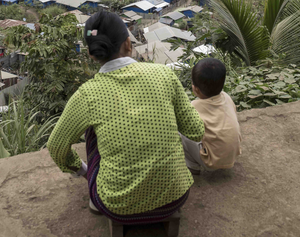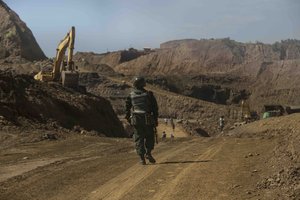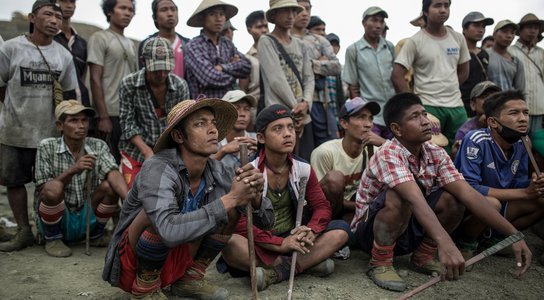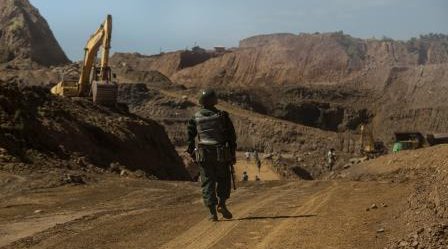As Myanmar wraps up its latest round of national peace talks in Naypyidaw, China has once again played an instrumental role behind the scenes. Representatives of the Northern Alliance, including the Kachin independence Army (KIA), turned up in response to pressure from the global power. Yet China’s ostensible desire for stability on its border could be challenged by the uninetended impacts of Xi Jinping’s flagship ‘Belt and Road’ Initiative, that is developing large-scale infrastructure across Asia, and its seemingly insatiable demand for jade and other resources from Myanmar.
Expectations for these peace talks were at an all-time low. Attacks have increased dramatically in northern Shan State and in Kachin State where, in the past year, the Myanmar military has moved to cut the KIA off from strategic revenues from jade, amber and gold mines. Meanwhile the army made clear, even before the talks, that sensitive issues such as minority rights and federalism wouldn’t be on the discussion table. It then marked the start of the conference by blaming the ethnic groups for the enduring conflict.

Villager sits with her child watching the operations of a major jade company in Hpakant (Minzayar Oo)
Peace through ‘development’
China not only has major stakes in the peace process, such as insulating its territories from conflict and securing its investments in Myanmar, but wields more power than any other outside actor. Its influence has continuously proved decisive in bringing the different sides of the conflict together, hosting negotiations in Yunnan province between the KIA and the Myanmar army in recent months, and flying in the Wa delegation at the last minute during the previous round of talks.
China wants stability on its border and usually frames its interest in Myanmar’s peace process in those terms, espousing the belief that tensions result from a lack of development rather than underlying ethnic and political issues.
China’s ambassador to Myanmar claimed this month that the ‘Belt and Road’ initiative would serve as an important driver of stability in the region. Unfortunately, previous experience with large-scale development projects in Myanmar suggests otherwise, including with the suspended mega hydropower Myitsone dam – which left a bitter legacy among ethnic Kachin communities – and the natural resource drivers contributing to the breakdown of the nearly 20 year ceasefire between the KIA and the army in 2011. Prioritizing development over a comprehensive peace accord risks alienating communities that are already suffering continued violent attacks as the Myanmar military attempts to seize territories controlled by ethnic armed groups. Since 2011, upwards of 150,000 people have been displaced because of the conflict.
Resources as drivers of conflict
Control over resources has become increasingly entwined with the military’s approach to the Kachin conflict, fuelled by the economic interests of army-linked companies. In the run up to the current peace conference, the Myanmar army has sought to consolidate its control over key territories, including areas in Kachin and in northern Shan state that are planned as economic corridors under the Belt and Road Initiative. The KIA has blamed these incursions on the army’s desire to do business with China.
Chinese business interests and consumer demand are also impacting the conflict in the north. Chinese appetite for jade is fuelling one of the most acrimonious ethnic conflicts in the country. Some 50-80% of jade is smuggled directly across the border to China, according to industry sources. Global Witness’s research has shown that hidden Chinese business interests are controlling much of the multi-billion dollar industry which the Myanmar military and ethnic armed groups profit heavily from. According to Chinese customs data, over US $12.3 billion worth of jade was formally imported in 2014, likely representing a fraction of the real trade, yet the people of Kachin State and the union government receive little benefit.

A Myanmar army soldier guards a jade mine in Hpakant, Kachin (Minzayar Oo)
The devastating impacts of resource exploitation in Kachin state are outlined in the short film ‘Jade and the Generals’ which is being released in Chinese today. It shows just how deadly these mining operations can be for the local population and environment, while lining the pockets of Myanmar’s elite, drug lords and hidden Chinese business partners.
In the main jade mining region of Hpakant in Kachin State, it is an open secret that Chinese business interests collude with the military, ethnic armed groups and drug lords to steal Kachin’s jadeite wealth, sparking conflict along the way. Our investigations have shown that bribes are paid at every step of the supply chain in Myanmar: to obtain a license, to officials at the mine site to undervalue production, and to the army, local militias and ethnic armed groups to facilitate smuggling.
At the central Beijing level, Chinese industry recognise the need for enhanced responsibility along its global supply chains linked to high-risk locations, identifying and mitigating associated risks and harms. Their guidelines for the minerals sector, reflecting international best practice, set out what more companies can and should be doing to sever their links to social and environmental harms. Their implementation along with other industry best practice and domestic legal reform is urgently needed in the jade sector in Myanmar.
The natural resource and corruption nexus provides a strong disincentive for the military and other conflict actors to pursue peace. Yet the economic drivers of conflict still have not been addressed in the peace talks, dealing a blow to their prospects of success.
The Chinese government could play an important role in resolving Myanmar’s decades-long conflicts and its efforts to bring parties to the table are welcome. But these efforts risk being jeopardised if it continues to push through a development agenda that is not sensitive to the drivers of conflict to which it is linked.


